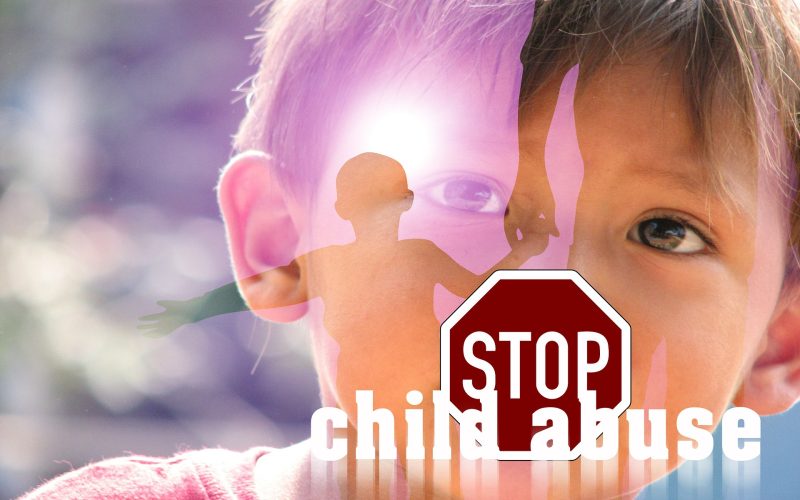Child abuse can also be referred to as child maltreatment. It can be described as the physical, sexual, and mental mistreatment or neglect of a child or children, particularly by a parent or a guardian.
Child abuse may also refer to any action or the lack of it by a parent or a guardian that leads to real or possible danger.
It can happen in the residence of a child or in the institutions, schools, or communities the child interacts with. The concepts of child abuse and child maltreatment are frequently used alternately.
However, many researchers establish a difference between them regarding child maltreatment as a generic term to encompass neglect, exploitation, and trafficking.
Various jurisdictions have cultivated their position concerning mandatory reporting and multiple definitions of what makes up child abuse to separate children from their families.
Various Definitions of Child Abuse
Definitions of what makes up child abuse differ among professionals and between social and cultural groups over some time. The concepts of abuse and maltreatment are frequently used alternately in the relevant field.
Child maltreatment can also be a general concept encompassing every kind of child abuse and child neglect. The definition of child maltreatment relies on dominant cultural values about children, child advancement, and parenting.
What child maltreatment means can differ across the segments of society. These segments include child protection agencies, legal and medical institutions, public health officials, researchers, practitioners, and child advocates.
Since members of these fields are likely to use their configured definitions, interactions across disciplines can be restricted, hindering attempts to identify, evaluate, monitor, treat, and avert child maltreatment.
Generally, abuse is consciously defined as committed acts, while neglect, on the other hand, defines acts of omission. Child maltreatment encompasses both committed and omitted actions on the part of parents or guardians that led to actual or potential harm to a child.
Some health experts and authors perceive neglect as an element of the meaning of abuse. In contrast, others do not share that perception.
This is because the harm could have been non-deliberate. It could also be because the parents or guardians did not grasp or comprehend the extent of the problem, which may have resulted from cultural beliefs about child upbringing.
Lingering impacts of child abuse and neglect, incredible emotional neglect, and the variety of acts that describe child abuse are also factors. According to the World Health Organization, child abuse and child maltreatment are defined as “all forms of physical and/or emotional ill-treatment.
It could also include sexual abuse, neglect or negligent treatment resulting in actual or potential harm to the child’s health, survival, development or dignity in the context of a relationship of responsibility, trust or power.”
In the United States, the Centers for Disease Control and Prevention (CDC) utilizes the concept of child maltreatment to define committed acts (abuse).
This contains utterances or severe actions that result in harm, possible harm, or threaten harm to a child. It also refers to omitted acts (neglect), defined as failing to cater to a child’s basic physical, emotional, or educational needs or secure a child from harm or potential harm.
History of Child Abuse
Two hundred years ago, callous acts towards children, carried out by employers and teachers, were pervasive, and corporal punishment was normalized in several countries.
But, in the earlier half of the 19th century, pathologists examining filicide (the parental killing of children) divulged death cases from paternal fury, frequent physical maltreatment, starvation, and sexual abuse.
In 1860, an essential study pieced together a series of 32 such cases, of which 18 were extremely severe, the children dying from starvation and/or frequent physical abuse.
It contained the subject of Adeline Defert, who was returned by her grandparents at the tender age of 8 and was, for nine years, tormented by her parents.
She was flogged daily, hung up by her thumbs, and hit with a nailed plank. She was also burnt with heated coals, and her injuries were washed in nitric acid.
Tardieu carried out home visits and studied the impact on the children. He observed that the sorrow and fear on their faces vanished when they were placed under protection.
He commented, “When we consider the tender age of these poor defenseless beings, subjected daily and almost hourly to savage atrocities, unimaginable tortures, and harsh privation, their lives become one long martyrdom.
When we face the fact that their tormentors are the very mothers who gave them life, we are confronted with one of the most appalling problems that can disturb the soul of a moralist or the conscience of justice”.
His observations were echoed by Boileau de Castélnau, the introducer of the term misopédie, which means hatred of children and verified by Aubry and multiple theses.
However, these French observations didn’t succeed in crossing the language barrier, and other countries did not know the origin of several traumatic lesions in children.
Almost a century before, the world addressed Tardieu’s ‘appalling problem.’ During the 20th century, evidence started to pile up from pathology and pediatric radiology, especially about chronic subdural hematoma and limb fractures.
In 1946, Caffey garnered attention to the affiliation of long bone fractures and chronic subdural hematoma. In 1955, it was observed that children separated from the hold of fierce, seemingly juvenile, and emotionally ill parents didn’t develop new lesions.
The concept of child abuse became an academic field of study in the early 1970s in the United States.
Elisabeth Young-Bruehl asserts that despite the increasing numbers of child advocates and willingness to protect children, the categorization of children into “the abused” and the “non-abused” resulted in a human-made chasm.
This slimmed the concept of children’s rights to just protection from maltreatment and hindered investigation of how children are discriminated against in society generally.
Another impact on the way child abuse and neglect have been examined, according to Young-Bruehl, was to ward off the perception of how children themselves interpret maltreatment and the essence they place on the dispositions of adults toward them.
Young-Bruehl writes that when the belief in children’s innate inferiority to adults is out there in society, the entirety of children suffer, whether or not their treatment is tagged as “abuse.”
Different Types of Child Abuse
In 2006, the World Health Organization identified four types of child maltreatment, and they include the following:
Physical Abuse
There has always been a general discord between the general public and experts about specific behaviors that should define physical abuse.
Physical abuse frequently doesn’t take place solitarily but as a part of a group of actions such as authoritarian control, anxiety-triggering behavior, and the absence of parental warmth.
The World Health Organisation aired its view on physical abuse. It is perceived as the deliberate use of physical force on a child.
The usual consequence is either actual harm or a high chance of harming the child’s health, survival, progress, or esteem.
Acts that make up physical abuse include hitting, beating, kicking, shaking, biting, strangling, scalding, burning, poisoning, and suffocating.
Overlaying descriptions of physical abuse and physical punishment of children emphasize a subtle or absent nuance between abuse and punishment.
The majority of the countries with child abuse laws regard the intentional infliction of severe wounds or acts that put the child at noticeable risk of severe injury or death to be illegal.
Bruises, scratches, burns, broken bones, lacerations, recurrent mishaps, and harsh treatment that could result in physical injuries can be regarded as physical abuse. Several wounds or fractures at various phases of healing can trigger suspicion of abuse.
The psychologist Alice Miller, recognized for her published works on child abuse, aired the view that humiliations, spankings, beatings, slaps in the face, etc., are all kinds of abuse.
Because they impair the integrity and esteem of a child, even if their results are not visible immediately, physical abuse meted out to a child can eventually result in physical and psychological challenges in the future.
Such difficulties include re-victimization, personality disorders, post-traumatic stress disorder, dissociative disorders, depression, anxiety, suicidal ideas, eating disorders, substance abuse, and aggression. Physical abuse in childhood has also been affiliated with homelessness in adulthood.
Sexual Abuse
Child sexual abuse can be described as a form of child abuse that entails an adult or older adolescent abusing a child for sexual stimulation or pleasure.
Sexual abuse depicts a child’s involvement in sexual activity to achieve physical satisfaction or the monetary profit of the person committing the act.
Forms of child sexual abuse include requesting or putting pressure on a child to participate in sexual acts (irrespective of the outcome) and indecent exposure of genitals to a child.
It also includes exhibiting pornographic content to a child, direct sexual interaction with a child, touching the child’s genitals, looking at the genitalia of the child without physically touching it or using a child to film child pornography.
The impacts of child sexual abuse on the victims include guilt, flashbacks, nightmares, insomnia, phobia of things connected to the abuse (objects, smells, places, doctor’s visits, etc.), self-image issues, sexual dysfunction, chronic pain, addiction, self-harm, and suicidal thoughts.
They also include somatic complaints, depression, post-traumatic stress disorder, and anxiety.
Other mental ailments such as borderline personality disorder and dissociative identity disorder, a propensity to re-victimization in adulthood, bulimia nervosa, physical injury to the child, and so on are likely to occur.
Victimized children are also at a heightened risk of sexually transmitted diseases because of their immature immune systems and a high likelihood of mucosal tears during coerced sexual contact. Sexual victimization at a tender age has been associated with multiple risk factors for contracting HIV.
It has also been noticed to include reduced knowledge of sexual topics, increased prevalence of HIV, participation in risky sexual acts, avoiding the use of a condom, decreased knowledge of safe sex acts, frequent alternation of sexual partners, and a more extended period of sexual activity.
In 2016, in the United States, approximately 15% to 25% of females and 5% to 15% of males were sexually abused during their childhood.
Most sexual offenders are familiar with their victims; about 30% are related to the child, most frequently siblings, parents, uncles, or cousins.
Approximately 60% are other acquaintances such as family friends, nannies, or neighbors. Strangers, being the offenders, make up roughly 10% of child sexual abuse cases. In more than one-third of cases, the offender is also a minor.
The federal prosecutors of the United States registered several charges against a South Korean man for allegedly operating the world’s “largest dark web child porn marketplace.”
Reportedly, the English-translated website “Welcome to Video,” which was seized, comprised over 200,000 videos or 8TB of data exhibiting sexual activities involving infants, children, and toddlers. It also processed about 7,300 Bitcoin, about $730,000 worth of transactions.
Psychological, Emotional, or Mental Abuse
There are several definitions of child psychological or mental abuse. In 2013, the American Psychiatric Association (APA) included Child Psychological Abuse in the DSM-5.
It was depicted as a deliberate verbal or symbolic act by the parent or guardian of a child that results in or has a considerable likelihood of resulting in a great deal of psychological harm.
In 1995, APSAC defined it as: “spurning, terrorizing, isolating, exploiting, corrupting, denying emotional responsiveness, or neglect” or “A repeated pattern of caregiver behavior or extreme incident(s) that convey to children that they are worthless, flawed, unloved, unwanted, endangered, or only of value in meeting another’s needs.”
Some have described it as creating mental and social defects in the child’s growth due to behavioral acts. These acts include shouting, harsh and rude attitude, lack of attention, severe criticism, and downgrading of the child’s personality.
Other examples of such behaviors include name-calling, mockery, degradation, destroying personal belongings, torment, killing a pet, extreme criticisms, improper or overt demands, withholding communication, and regular labeling or humiliation.
In 2014, the American Psychiatric Association stated that childhood mental abuse is as deadly as sexual or physical abuse. It also said that virtually 3 million U.S. children go through some form of psychological mistreatment yearly. Mental mistreatment is the most dominant and challenging kind of child abuse and neglect.
Owing to the dominance of childhood psychological abuse and the degree of harm to young victims, it should be at the frontline of psychological health and social service training. In 2015, further research verified these 2014 statements of the APA.
Victims of mental abuse may respond by putting distance between themselves and the abuser, self-reflecting on the abusive utterances, or fighting back by insulting the abuser.
Psychological abuse can lead to abnormal or interrupted attachment development, a likelihood for victims to heap blame on themselves for the abuse, learned helplessness, and extremely passive behavior.
Child Neglect
Child neglect occurs when a parent or guardian fails to provide the necessary amenities such as food, clothing, shelter, medical care, or supervision to the extent that the child’s health, security, or welfare may be threatened with harm.
Neglect is the absence of attention from the people around a child and failure to provide the essential and proper necessities for the child’s survival, including the absence of attention, love, and nurturing.
Some noticeable indications of child neglect include:
- Regular absence from school
- Begs for or steals food and money
- Lacks necessary and basic medical and dental care
- Always being dirty
- Lacks appropriate clothing for the weather
The 2010 Child Maltreatment Report (NCANDS), an annual United States federal government report based on data supplied by state Child Protective Services (CPS) Agencies in the U.S., discovered that neglect or neglectful behavior was the most prevalent kind of child mistreatment.
Acts of neglect can be segmented into six sub-categories:
- Supervisory neglect: This is typically the absence of a parent or guardian, which can result in physical harm, sexual abuse, or criminal behavior
- Physical neglect: This can be described as the failure to provide the necessary physical necessities for a child, such as a safe and clean home
- Medical neglect: This can be defined as failing to provide medical care for the child
- Emotional neglect: This is the absence of nurturance, motivation, and support for the child
- Educational neglect: This is simply the failure of either the parent or guardian to cater to the educational needs and provide extra resources to be engaged in the school system actively
- Abandonment occurs when a parent or caregiver leaves the child alone for a lengthy period without a babysitter or caretaker.
Children who are victims of neglect may go through slower physical and psychosocial development, potentially resulting in psychopathology and damaged neuropsychological functions.
This may also affect their executive function, attention, processing speed, language, memory, and social skills.
Effects
Child abuse can lead to immediate severe physical effects, but it also has an established association with developmental issues.
This affiliation extends to several chronic physical and psychological effects, including subsequent poor health, increased rates of chronic conditions, risky health behaviors, and reduced lifespans.
Mistreated children may grow up to be mistreating adults. A 1991 study showed that about 90 percent of maltreated adults were treated poorly as children.
Virtually 7 million American infants are beneficiaries of child care services, such as daycare, and much of that care is below par.
Children who were victims of abuse can grow up suffering from insecurities, deflated self-esteem, and lack of development.
Several abused children go through ongoing challenges with trust, withdrawal from groups and society, school troubles, and fostering relationships.
Infants and other very young children can be impacted differently by abuse than their more advanced counterparts.
Young children suffering from emotional abuse or neglect may be overly affectionate towards strangers or people they are not well acquainted with.
They become less confident or anxious, seeming not to have a healthy relationship with their parent, display hostile behavior, or act aggressively towards other children and animals.
Older children may use abusive or vile language or act differently to other children in their age bracket. They may be unable to control intense emotions, seem distant from their parents, and be socially inept.
The immediate physical impacts of abuse or neglect can be somewhat minor. These impacts may include bruises, cuts, severely broken bones, bleeding, or even death.
In many cases, the physical impacts are short-lived. However, the pain and suffering they trigger in a child should not be overlooked.
Rib fractures may be a common sight with physical abuse. If present, they may heighten suspicion of abuse but are discovered in the minority of children with abuse-related injuries.
Children with past events or experiences of neglect or physical abuse stand a chance of developing psychiatric problems or a disorganized attachment style.
Furthermore, children who suffer from child abuse or neglect are 59% more likely to be arrested as juveniles.
28% more are likely to be arrested as adults, and 30% more are predisposed to commit violent crimes.
Disorganized attachment is connected to an array of developmental challenges, including dissociative symptoms and symptoms of anxiety, depression, and acting out.
Children may find it challenging to feel sympathy for themselves or others, making them feel lonely and unable to make friends.
Despite these possible challenges, psychosocial intervention can be potent, at least in some cases, in alternating the ways mistreated parents think about their young children.








